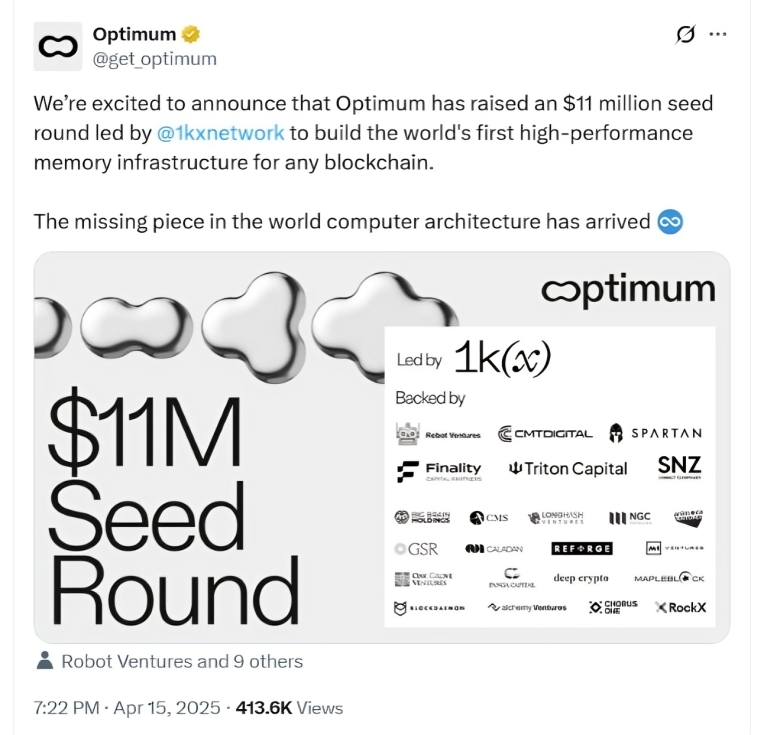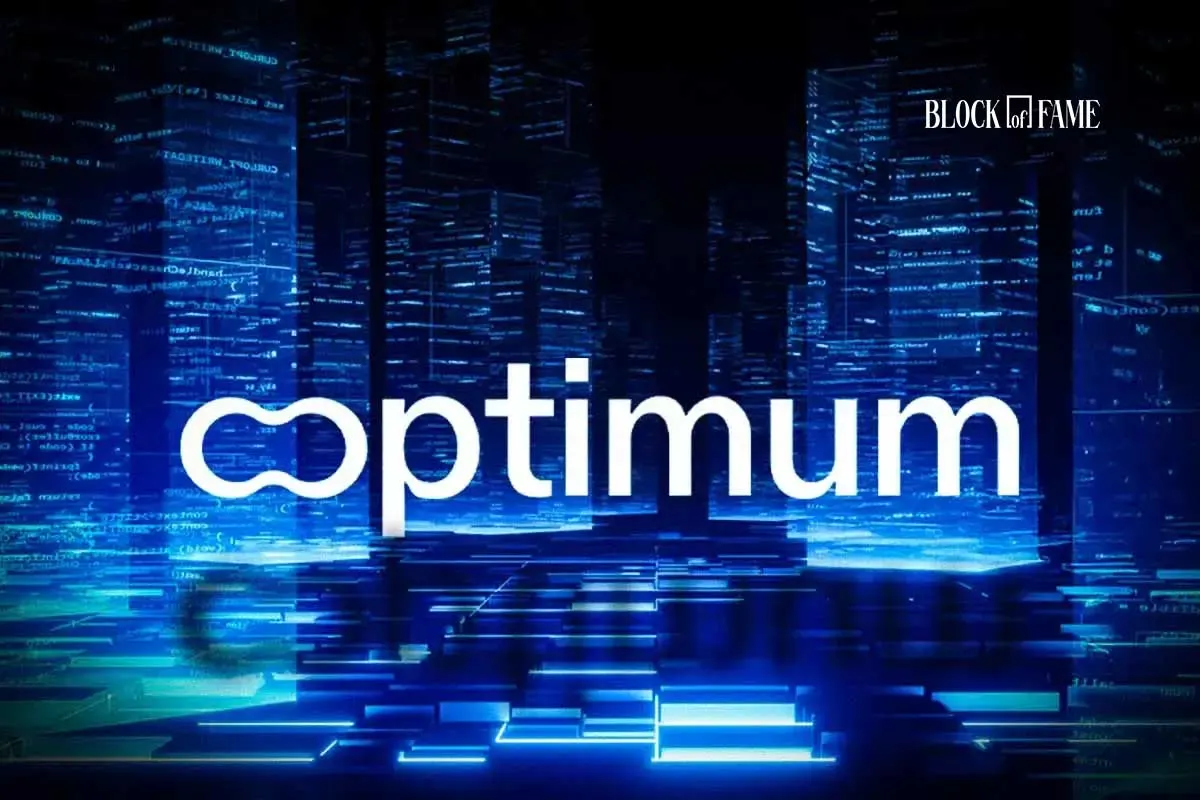Optimum Funding:- Blockchains, by design, are stateless. Each transaction or smart contract execution is isolated from the others.
This means that smart contracts cannot “remember” previous interactions unless they explicitly store information on-chain. But this can be inefficient and costly.
However, with a memory layer, the decentralized finance (DeFi) application could store a user’s staking history, balance, or even preferences in a memory layer. This will make it much easier for the users to track and interact with their portfolio.
In a major stride toward achieving this, Optimum, a Web3 infrastructure startup, has raised $11 million in a funding round led by prominent crypto investors.
The company is building a “memory layer” that aims to enable instant and permissionless access to historical on-chain data across all major blockchains.
The seed funding round was co-led by Maven 11, 1kx, and Galaxy Ventures, with participation from Hashed, Robot Ventures, and Inflection.xyz, among others. Notably, the investor lineup reflects growing appetite for data infrastructure in Web3.
The capital will be used to expand the team, enhance developer tools, and roll out the core infrastructure of Optimum’s memory layer across multiple ecosystems.
Can Optimum Solve Blockchain’s “Amnesia Problem”?
Blockchains, by design, are optimized for consensus and verification. But they are not for storing or querying massive amounts of historical data.
Optimum validates its existence by arguing that most decentralized applications (dApps) rely on third-party indexers or off-chain solutions to access older states. This ends up creating bottlenecks, points of failure, and a lack of verifiability.
Optimum aims to address what it calls the “amnesia problem” of blockchains. It is working on a composable memory layer that allows developers and smart contracts to fetch any historical data directly, quickly, and trustlessly.
Notably without historical memory, detecting suspicious behavior (like sandwich attacks, MEV patterns, or recurring exploits) becomes tough.

How It Works
Optimum’s memory layer operates as an abstraction over multiple blockchains, storing compressed and verifiable summaries of historical state data.
It uses advanced cryptographic techniques—such as zero-knowledge proofs and succinct data commitments—to ensure data integrity and composability.
This means developers can ask questions like “What was the ETH balance of this address on June 1, 2021?” directly on-chain without relying on centralized APIs like Etherscan or The Graph.
It aims to provide modern computing type storage capabilities to Blockchains. For this, it is developing a RAM layer called DeRAM. This layer would provide real-time read/write access to Blockchain state for cheap yet fast storage capabilities.
The memory layer is designed to work across Ethereum, Solana, Cosmos, and other major Layer-1 and Layer-2 chains, positioning Optimum as a universal data availability protocol.
Co-founded and led by MIT Professor Muriel Medard, its core lies in Random Liner Network Coding (RLNC). This data coding pioneering idea transforms data into coded packets. She recently also released a video explaining the whole concept and her vision.

Notably, smart contracts are mostly stateless and don’t remember past interactions unless explicitly designed to.
Without a memory layer, users are repeatedly asked for information already provided (e.g., login details, past balances, asset histories).
What’s Next?
Optimum plans to launch a testnet version of its memory layer by Q3 2025, starting with support for Ethereum and Solana. It has currently launched only private testnet.
The full mainnet rollout is scheduled for early 2026, accompanied by an SDK and GraphQL-like query language for developers.
The team is also exploring incentive models to decentralize data provisioning, including potential token rewards for nodes that contribute to the memory network.
Thus, as blockchain moves from raw ledgers to intelligent state machines, Optimum is aiming to position itself as the memory that powers “world computer” of web3.
Why trust CoinGape: CoinGape has covered the cryptocurrency industry since 2017, aiming to provide informative insights to our readers. Our journalists and analysts bring years of experience in market analysis and blockchain technology to ensure factual accuracy and balanced reporting. By following our
Editorial Policy, our writers verify every source, fact-check each story, rely on reputable sources, and attribute quotes and media correctly. We also follow a rigorous
Review Methodology when evaluating exchanges and tools. From emerging blockchain projects and coin launches to industry events and technical developments, we cover all facets of the digital asset space with unwavering commitment to timely, relevant information.
Investment disclaimer: The content reflects the author’s personal views and current market conditions. Please conduct your own research before investing in cryptocurrencies, as neither the author nor the publication is responsible for any financial losses.
Ad Disclosure: This site may feature sponsored content and affiliate links. All advertisements are clearly labeled, and ad partners have no influence over our editorial content.

Share